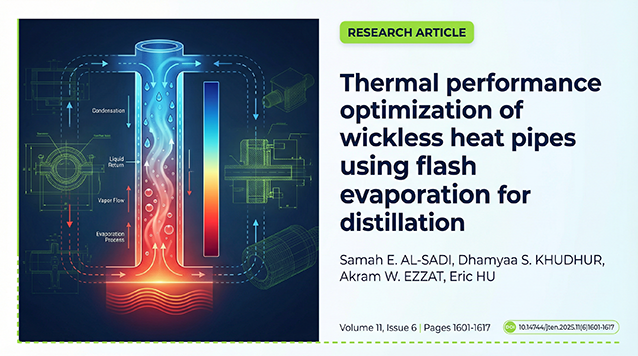2Department of Mathematics, Augustine University Ilara Epe, Lagos, 106103, Nigeria
3Department of Mechanical Engineering, Istanbul Medeniyet University, Istanbul, 34700, Türkiye
Abstract
Research on ternary hybrid nanofluids is driven by the hope that combining various nanoparticles will lead to better heat transfer efficiency, thermal conductivity, as well as other desired properties. The goal of study is to create a nanofluid that performs better than its binary equivalents by deliberately choosing and combining nanoparticles with different sizes, designs, and thermal conductivities. This research delves into the intricacies of stagnation point flow, taking into account suction/injection, a stretching/shrinking sheet, and slip flow boundary conditions. Employing a ternary hybrid nanofluid (THNF) composed of titanium oxide, silver, and zinc oxide provides insights into the velocity field and thermal characteristics. The study leverages the Tiwari Das nanofluid model and boundary flow equations in two dimensions. The governing equations undergo a transformation into a system of ordinary differential equations (ODEs) via a similarity transformation. These ODEs are subsequently tackled using the finite element method. A meticulous parametric study is executed, manipulating the stretching/shrinking parameter, suction/injection parameter, slip flow parameter, and total volume fraction of the ternary nanofluids. The chosen ranges for these parameters are -1 to 0.5, -1 to 1, 0 to 1, and 0.03 to 0.3, respectively. The observed trend reveals a consistent decrease in the percentage change in temperature concerning the ambient temperature with an increase in normalized distance from the stagnation point, whether the sheet is stretching or shrinking. Notably, the temperature decline is more pronounced in the case of a shrinking sheet. Additionally, in instances involving injection, the transformation from a shrinking sheet to a stretching one exerts a more substantial impact on the percentage change in temperature relative to ambient conditions compared to the suction case. The novelty of the work lies in the study's discovery of correlations for average velocity and average temperature profiles related to the slip flow parameter, suction parameter, and stretching/shrinking parameter, providing a more accurate estimation.























